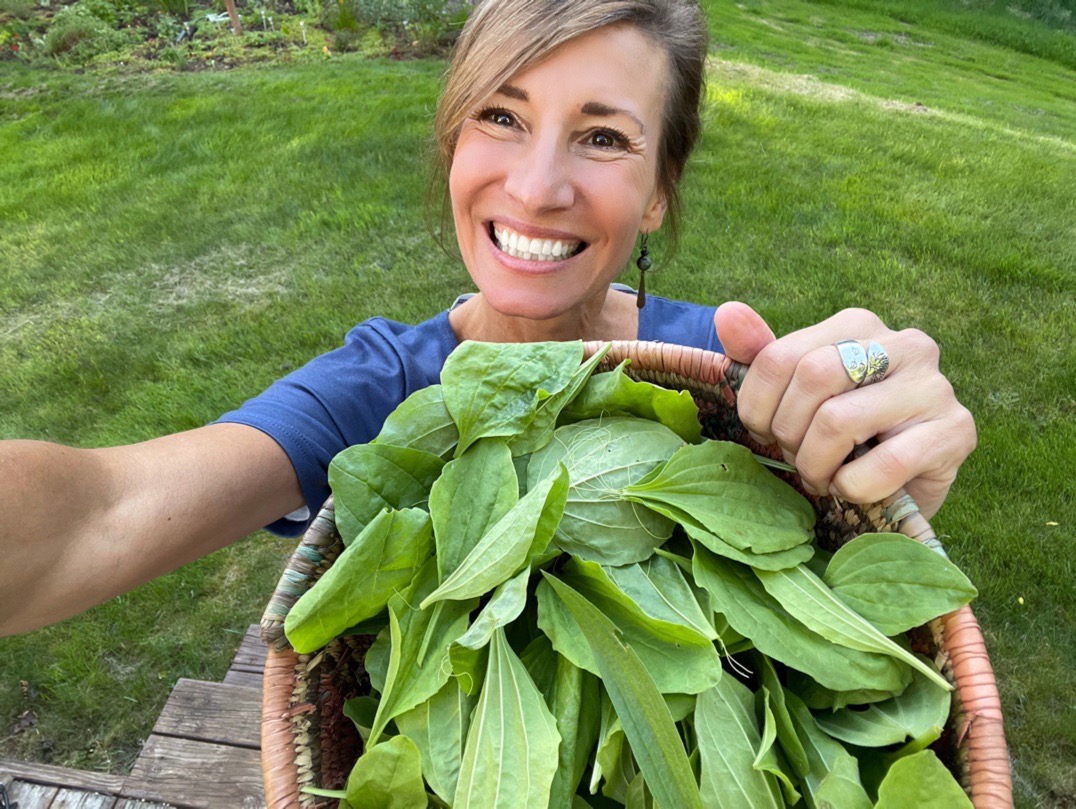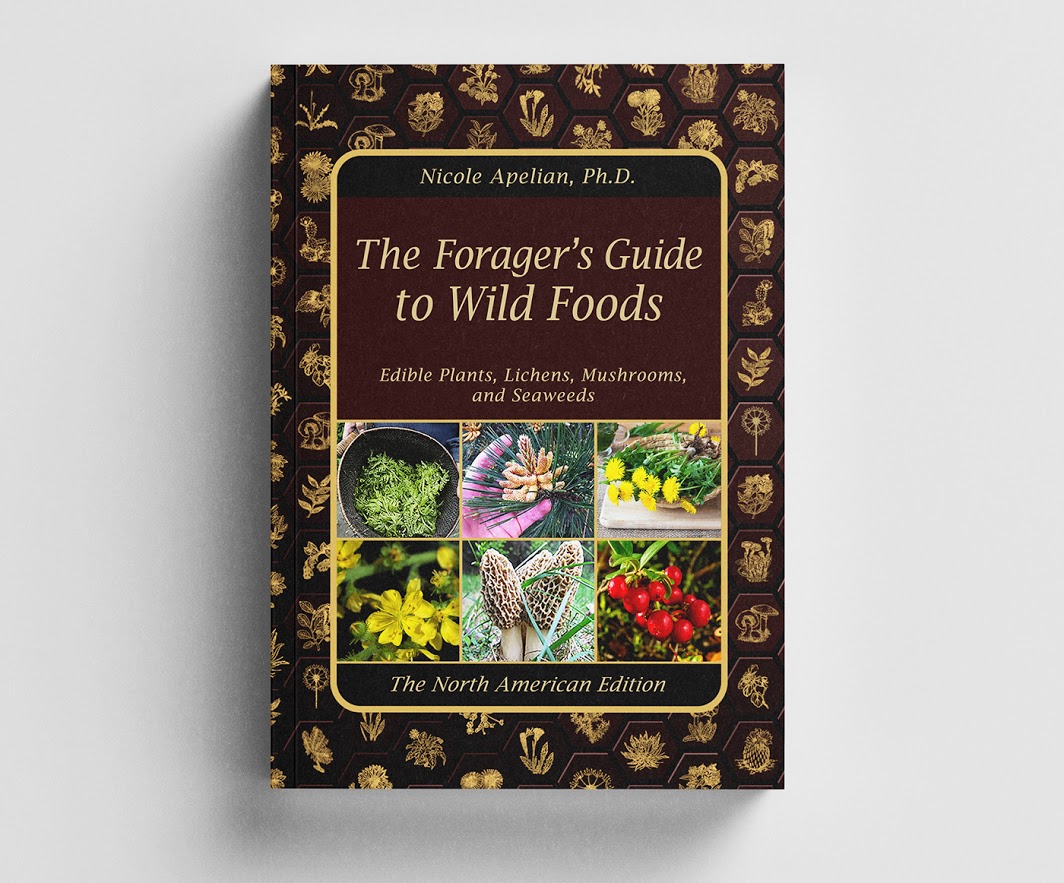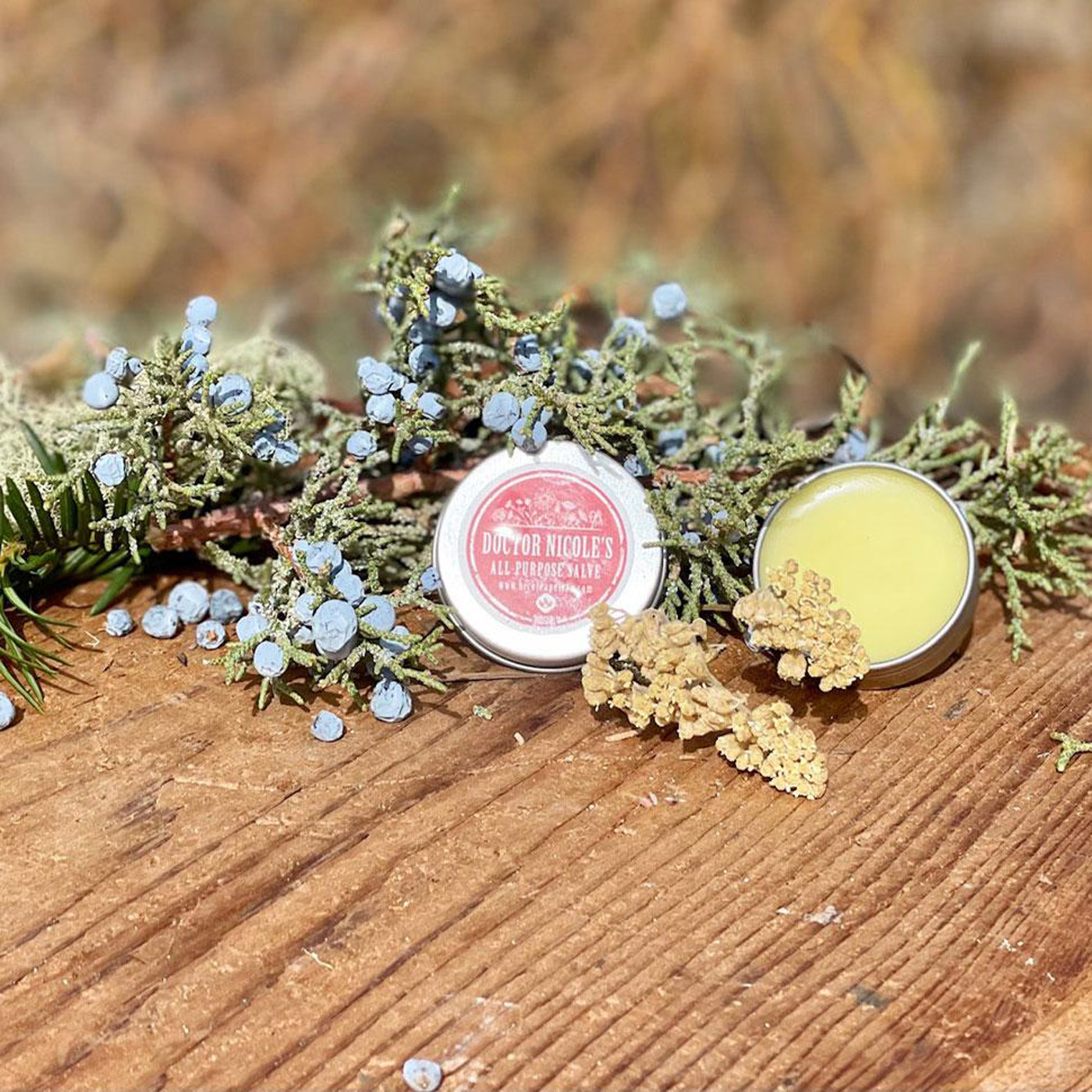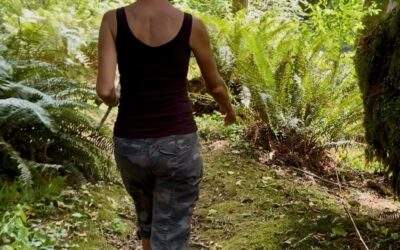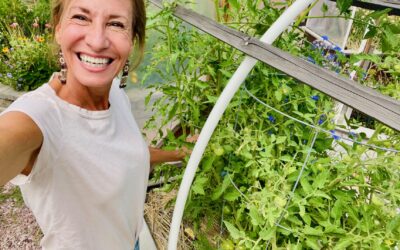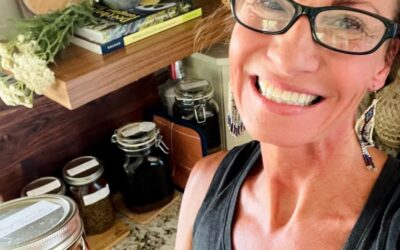Wildly Healthy
The next time you reach for that tube of Pringle’s chips, consider plantain leaves instead! This weed can be found growing in most gardens and is particularly happy in places where other plants dare not to set down roots — such as poor soil and high-traffic areas with hard ground.
Before brushing this hearty little plant aside, think about the vast array of uses that can be utilized by the savvy gardener — including making tasty and nutritious chips.
Interested in learning more about how plantain weed can help to address inflammation, digestive complaints, venomous bites, and wound healing? We will explore all of this and more — plus a delicious wild food recipe!
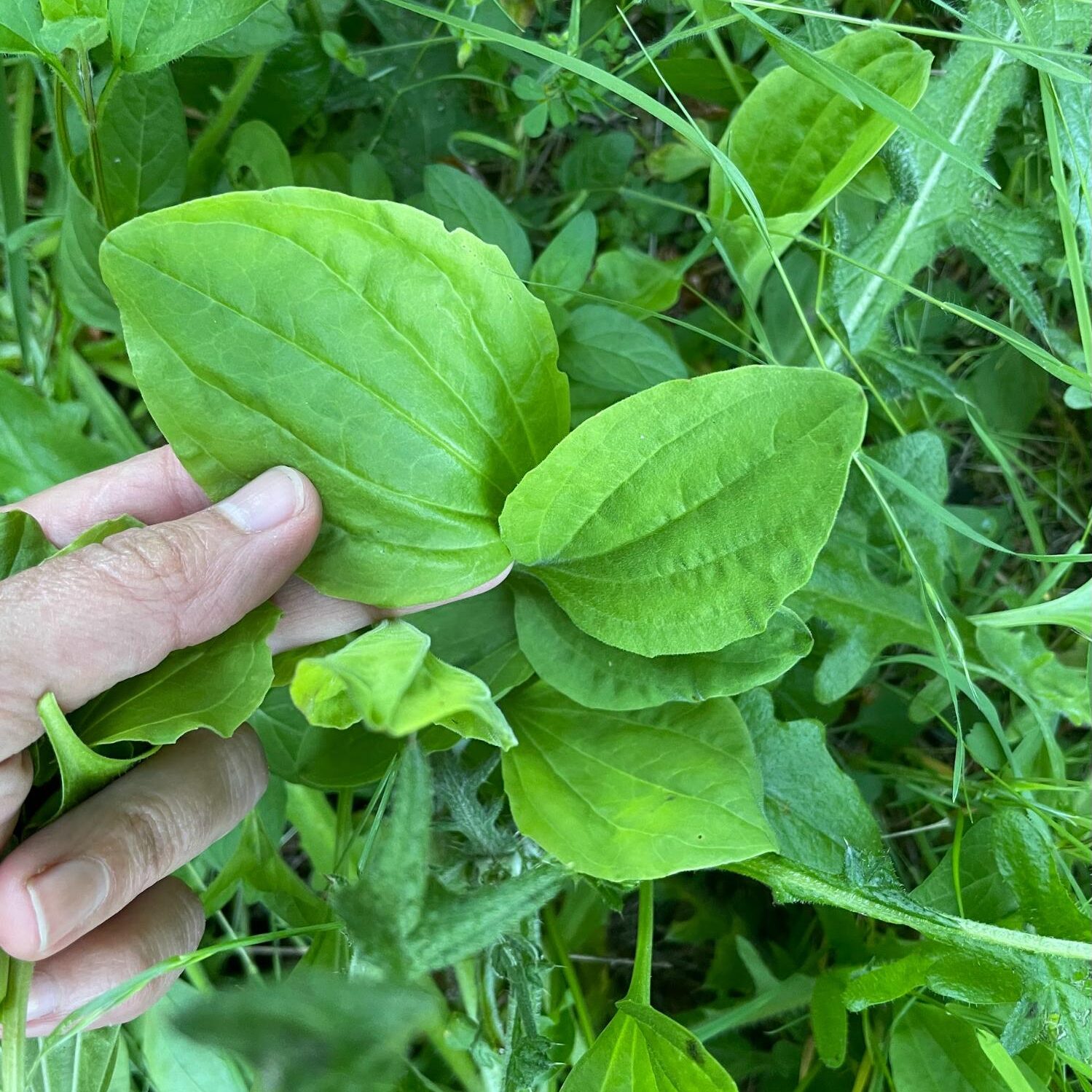
Identification & Harvesting
Not to be confused with the fruit in the store, the plantain plant (Plantago major) can be found growing in lawns, gardens, and along paths. The leaves are ruffled and grow in a rosette spiral pattern with tall, flowering stalks that grow from the center of the foliage.
The greenish-white flowers have purple stamens and grow densely packed to heights up to 18 inches (45 cm) tall. Plantain weed is found throughout North America, Europe, and Asia. Always make sure to harvest in clean areas away from roadways and pollution.
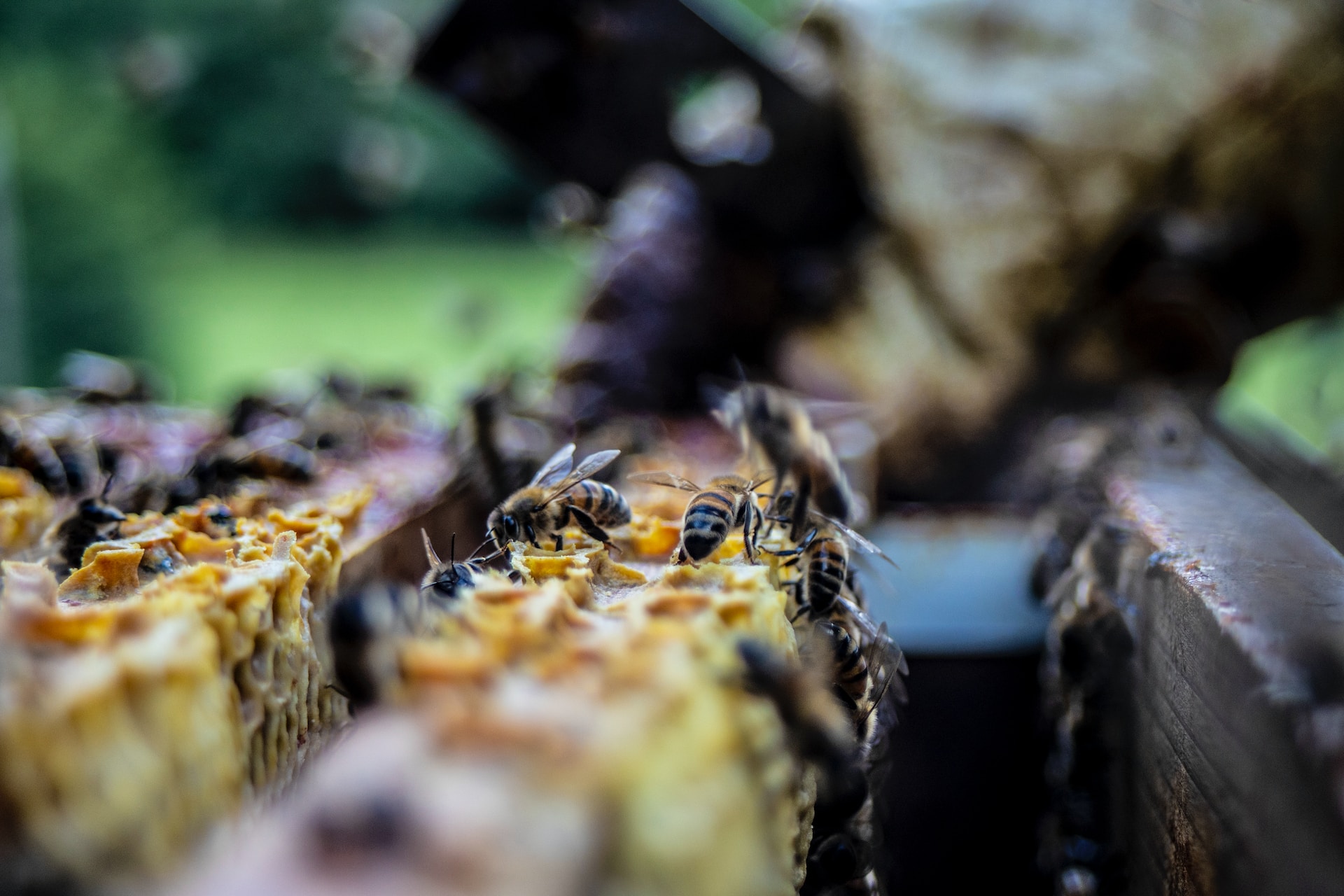
A Medicinal Powerhouse
Plantain is an outstanding wild plant for a number of conditions, including leaky gut, inflammation, ulcers, and respiratory tract infections. It is also helpful for healing wounds and drawing out venom when applied topically as a poultice for bites and stings.
In fact, I taught my boys to pick plantain leaves and apply them directly on a bee sting to draw out the venom and calm the pain and inflammation. It works wonders!
You can also make a plantain salve to keep on hand using the general recipe found in The Lost Book of Herbal Remedies. A convenient ready-made salve is also available in my apothecary that not only contains plantain, but several other healing medicinal herbs.
Seeking additional benefits from this humble plant? One study found that an extract of plantain seed significantly improved inflammation and protected the liver against toxicity and damage in animal models, leading the research team to conclude that the plant exhibited “… considerable anti-inflammatory and hepatoprotective activities.”1
Likewise, research published in Pharmacognosy Magazine found plantain seed methanol and water extract is effective against the inflammatory response, while also demonstrating anti-cancer properties. Plantain root extract showed outstanding anti-inflammatory action as well.2
However, taming inflammation and protecting against cancer aren’t plantains’ only superpower. It is also helpful for healing stomach ulcers, addressing inflammatory bowel disease (IBS) and ulcerative colitis, correcting both constipation and diarrhea, and accelerating wound healing.3,4,5,6,7
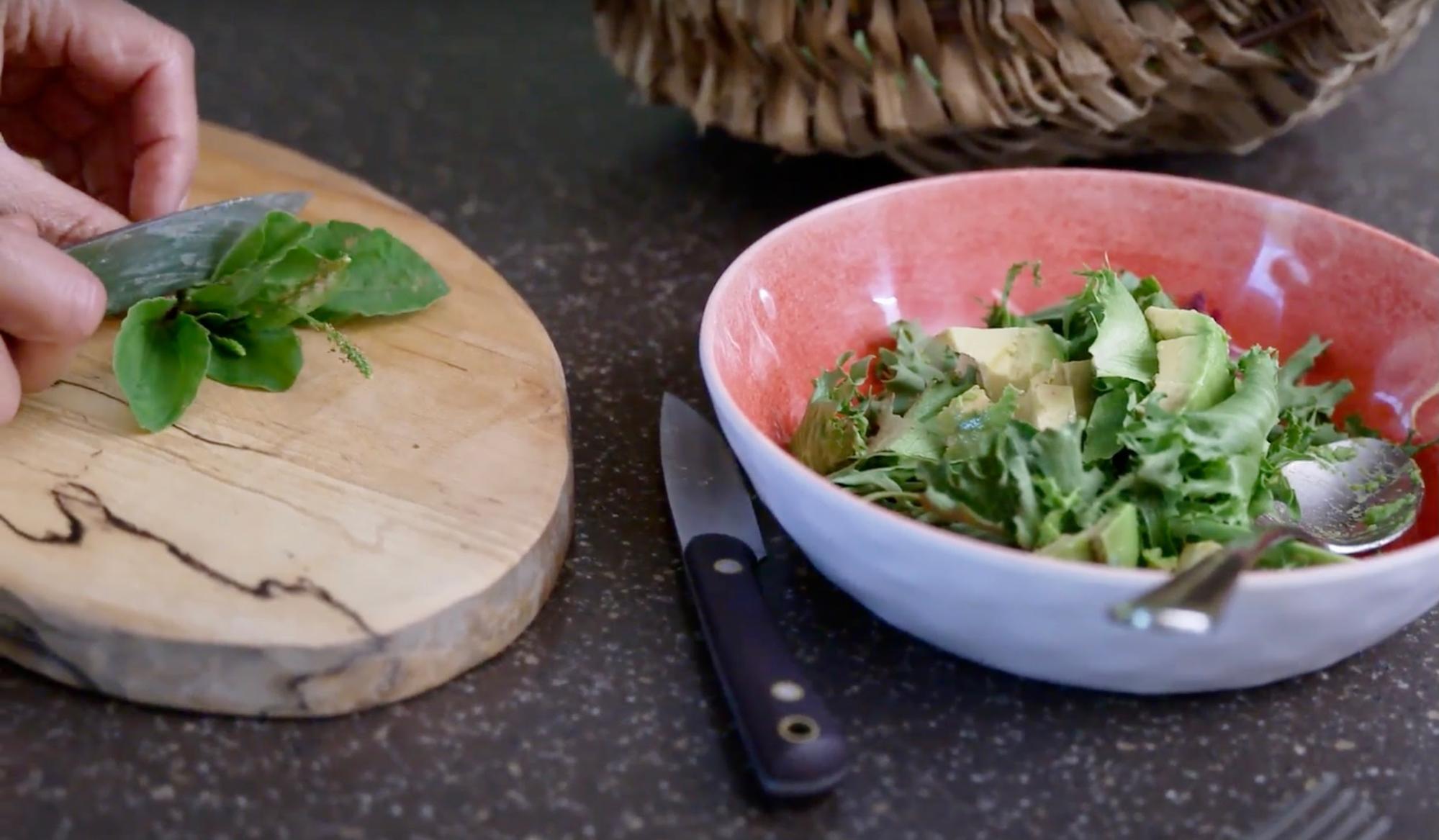
What Parts of the Plant are Edible?
You can toss the young leaves into a salad or sauté it like spinach. The leaves are therapeutic when brewed as a tea too. You can make a dual-extracted tincture or water decoction from the roots and/or seed. You can also eat the seeds directly, cook in a soup, or grind into a flour — although they are so tiny that this is very labor intensive.
As a fun alternative, I like to gather the young leaves and make crunchy chips. Here’s the recipe:
Ingredients
- Plantain leaves
- Olive or avocado oil
- Sea Salt
- Garlic powder (optional)
Instructions
- Preheat the oven to 350 °F.
- Thoroughly wash the plantain leaves under running water and lay them flat on a paper towel. Pat dry.
- Line a baking sheet with parchment paper. Arrange the leaves in a single layer on the pan with space around each one and lightly brush with oil. Sprinkle with salt and garlic powder, if using.
- Bake for 6-8 minutes until crispy. Remove from the oven and cool completely before storing in an airtight container.
Discover Nature’s Bounty: The Ultimate Guide to Wild Foods
Craving more wild food recipes? If so, you will love my book, The Forager’s Guide to Wild Foods: Edible Plants, Lichens, Mushrooms, and Seaweeds. It is now available in both North American and European editions!
This is the ultimate guide for anyone who wants to explore the wild side of food and learn how to identify, harvest, and prepare over 400 edible and medicinal plants across North America or Europe.
In this book, you will find everything you need to know about wild foods, including:
- An introduction to each plant with its common and scientific names, history, and folklore.
- A detailed range map, showing where you can find it in the wild.
- A description of the edible and medicinal uses of each plant, with tips on how to prepare and preserve them.
- A list of poisonous look-alikes, so you can avoid any unpleasant surprises.
- A close-up photo of the flowers and leaves, to help you identify each plant with confidence.
- A simple and delicious recipe to inspire you to try new dishes with your wild harvest.
Don’t miss this opportunity to reconnect with nature and enjoy the wonders of wild foods. Order your copy of The Forager’s Guide to Wild Foods today and start your journey into the world of foraging. You will be amazed by what you can find and eat right outside your doorstep!
Nicole Apelian
Nicole’s Apothecary Products in this Post
References
-
- Türel, I., Ozbek, H., Erten, R., Oner, A. C., Cengiz, N., & Yilmaz, O. (2009). Hepatoprotective and anti-inflammatory activities of Plantago major L. Indian journal of pharmacology, 41(3), 120–124. https://doi.org/10.4103/0253-7613.55211
- Kartini, Piyaviriyakul, S., Thongpraditchote, S., Siripong, P., & Vallisuta, O. (2017). Effects of Plantago major Extracts and Its Chemical Compounds on Proliferation of Cancer Cells and Cytokines Production of Lipopolysaccharide-activated THP-1 Macrophages. Pharmacognosy magazine, 13(51), 393–399. https://doi.org/10.4103/pm.pm_406_16
- Melese, E., Asres, K., Asad, M., & Engidawork, E. (2011). Evaluation of the antipeptic ulcer activity of the leaf extract of Plantago lanceolata L. in rodents. Phytotherapy research : PTR, 25(8), 1174–1180. https://doi.org/10.1002/ptr.3411
- Triantafillidis, J. K., Triantafyllidi, A., Vagianos, C., & Papalois, A. (2016). Favorable results from the use of herbal and plant products in inflammatory bowel disease: evidence from experimental animal studies. Annals of gastroenterology, 29(3), 268–281. https://doi.org/10.20524/aog.2016.0059
- Ke, F., Yadav, P. K., & Ju, L. Z. (2012). Herbal medicine in the treatment of ulcerative colitis. Saudi journal of gastroenterology : official journal of the Saudi Gastroenterology Association, 18(1), 3–10. https://doi.org/10.4103/1319-3767.91726
- Najafian, Y., Hamedi, S. S., Farshchi, M. K., & Feyzabadi, Z. (2018). Plantago major in Traditional Persian Medicine and modern phytotherapy: a narrative review. Electronic physician, 10(2), 6390–6399. https://doi.org/10.19082/6390
- Thomé, R. G., dos Santos, H. B., dos Santos, F. V., da Silva Oliveira, R. J., de Camargos, L. F., Pereira, M. N., Longatti, T. R., Souto, C. M., Franco, C. S., de Oliveira Aquino Schüffner, R., & Ribeiro, R. I. (2012). Evaluation of healing wound and genotoxicity potentials from extracts hydroalcoholic of Plantago major and Siparuna guianensis. Experimental biology and medicine (Maywood, N.J.), 237(12), 1379–1386. https://doi.org/10.1258/ebm.2012.012139
Need Herbs?
Looking for quality herbs and core ingredients for making your own herbal remedies? Mountain Rose Herbs has a wide variety of high-quality bulk herbs and ingredients for making your own natural salves, tinctures, oil infusions, teas, and more.

